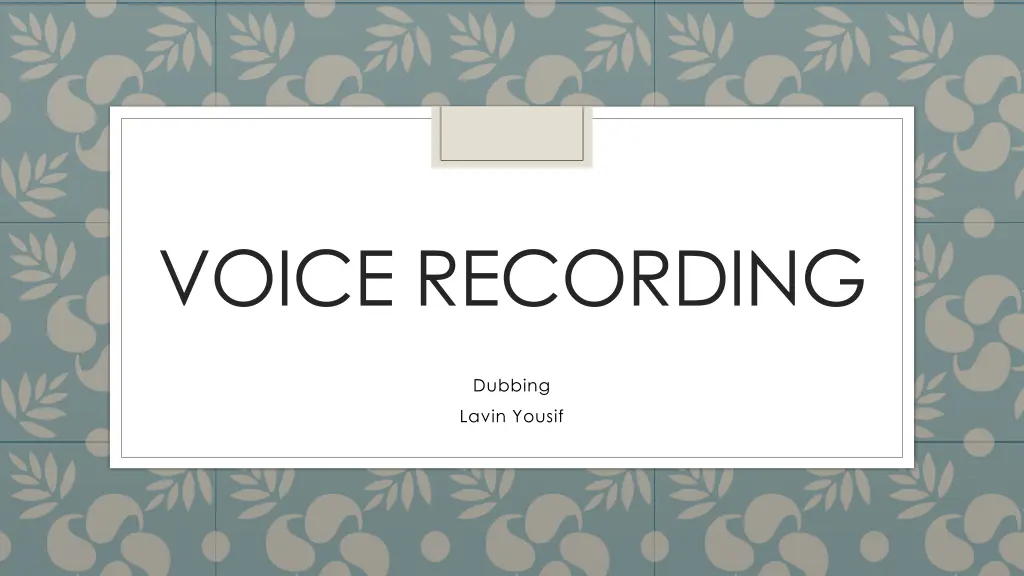
Voice Recording for Dubbing: Tips and Techniques
"Prepare for voice recording dubbing by mastering script interpretation, character analysis, recording setup, performance delivery, and editing. Follow steps from script preparation to post-production for seamless dubbing sync."
Download Presentation

Please find below an Image/Link to download the presentation.
The content on the website is provided AS IS for your information and personal use only. It may not be sold, licensed, or shared on other websites without obtaining consent from the author. If you encounter any issues during the download, it is possible that the publisher has removed the file from their server.
You are allowed to download the files provided on this website for personal or commercial use, subject to the condition that they are used lawfully. All files are the property of their respective owners.
The content on the website is provided AS IS for your information and personal use only. It may not be sold, licensed, or shared on other websites without obtaining consent from the author.
E N D
Presentation Transcript
VOICE RECORDING Dubbing Lavin Yousif
Voice Recording Preparation: Script Preparation: Obtain the script for the dialogue you'll be dubbing. Familiarize yourself with the lines, the character's emotions, and the context of the scene. Understanding the Character: Analyze the character's personality, traits, and motivations to inform your performance. Consider how the character would speak and emote in various situations.
Recording Space: Choose a quiet, acoustically treated room with minimal background noise to record in. This helps ensure clean audio recordings without distractions. Microphone Selection: Use a high-quality microphone suitable for voice recording. A condenser microphone is commonly used for dubbing due to its sensitivity and clarity. Headphones: Wear headphones to monitor your performance and ensure accurate timing and synchronization with the original dialogue.
Recording Process Syncing with the Video: Set up the video playback device (e.g., computer, tablet) with the scene you're dubbing. Ensure that you can easily see and hear the original dialogue for reference. Recording Software: Use audio recording software on your computer or a standalone digital recorder to capture your voice performance. Positioning: Position yourself comfortably in front of the microphone at an appropriate distance (usually 6-12 inches) to maintain consistent audio levels and clarity.
Performance: Start the video playback and listen to the original dialogue. As the character speaks, deliver your lines with appropriate timing, emotion, and intensity to match the original performance. Multiple Takes: Record multiple takes of each line or scene to capture different interpretations and nuances. This allows you to choose the best take during the editing process. Watch for Lip Sync: Pay attention to lip movements and timing in the video to ensure that your dubbed dialogue matches the lip movements of the original character as closely as possible.
4. Editing and Post-Production: Editing Software: Use audio editing software to trim, clean, and enhance the recorded voice tracks. Remove any unwanted noise, adjust volume levels, and apply effects if necessary. Synchronization: Align the dubbed dialogue with the video by adjusting timing and pacing as needed. Ensure that the lip movements match the dubbed dialogue for a natural and seamless result.
